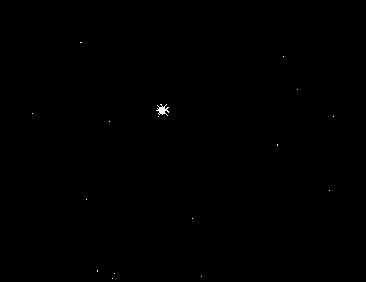RX OPH, Type: Mira, Period 323 days, 9.8- <13.0 Mag.


RX Oph is a long period Mira type variable. Miras are old red stars which can expand and contract in size. This change in size can bring about a change in magnitude. Last year AAVSO classified RX Oph as in need of observation. I started observing RX right around the time it had reached maximum. Unfortunately the star was too low in the horizon to follow past November
(2000) from my home. But the light curve above does display RX Oph's graceful fall of 3 magnitudes over a few months time. When my data is added to that of other AAVSO observers, a beautiful light curve can be obtained displaying RX Oph's maximum and minimum.
RX Oph has a period of 323 days and can change magnitudes from 9.8 to below 13.0SS Cyg, Type: U Gem, Period 49.5 days, 8.3-12.2 Mag.


Above is a light curve of the infamous variable
star, SS Cygni. This star is a typical U Gem type variable which can jump 4 magnitudes literally overnight! I carefully watched SS Cygni for a few weeks just waiting for
an outburst. At this time (before outburst), SS Cyg. was just beyond the visibility of my 4" F4.5 Astroscan. So my 8" SCT was used to track the star. Finally one night in September, SS Cygni went into outburst and jumped all the way to the 8 th magnitude range. Now
the star was plainly visible in my 4" Astroscan, and I watched her fade back to normal over the course of a few days. SS Cygni is thought to be a pair of dwarf nova which show peroidic outburst. The theory is that the smaller companion draws matter off the larger companion. Observations of SS Cygni were particularly important last summer (2000).
AAVSO had been called upon by the professional community to supply up to date information pertaining to the star's activity. Professionals
hoped to align three satillites at once to monitor the stars outburst in different
spectrums. When alerted by AAVSO observers that the star was going
into out burst, professionals pointed their satillites to gather valuable
data. This was just another example of how amatuer and professional community can work together. Nova Aquilae No.2 1999


In the beginning of December a
new star appeared where one had not been before. This was Nova
Aquilae No 2. The day after this new star appeared AAVSO already
had information about the Nova's discovery and a chart. The Nova was well
placed in the western sky. I followed the nova for a few weeks till it was
too low to observe from my site. Nova Aquila was particular easy to
estimate using only a pair of 7X35 binoculars.
If you would like to see
each of my observations sent to AAVSO for years 1999 and 2000 click here.
For more info, visit the American Association of Variable Star observers at AAVSO.ORG
|


